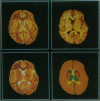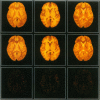Abstract
Mathematical techniques are presented for the transformation of digital anatomical textbooks from the ideal to the individual, allowing for the representation of the variabilities manifest in normal human anatomies. The ideal textbook is constructed on a fixed coordinate system to contain all of the information currently available about the physical properties of neuroanatomies. This information is obtained via sensor probes such as magnetic resonance, as well as computed axial and emission tomography, along with symbolic information such as white- and gray-matter tracts, nuclei, etc. Human variability associated with individuals is accommodated by defining probabilistic transformations on the textbook coordinate system, the transformations forming mathematical translation groups of high dimension. The ideal is applied to the individual patient by finding the transformation which is consistent with physical properties of deformable elastic solids and which brings the coordinate system of the textbook to that of the patient. Registration, segmentation, and fusion all result automatically because the textbook carries symbolic values as well as multisensor features.
Full text
PDF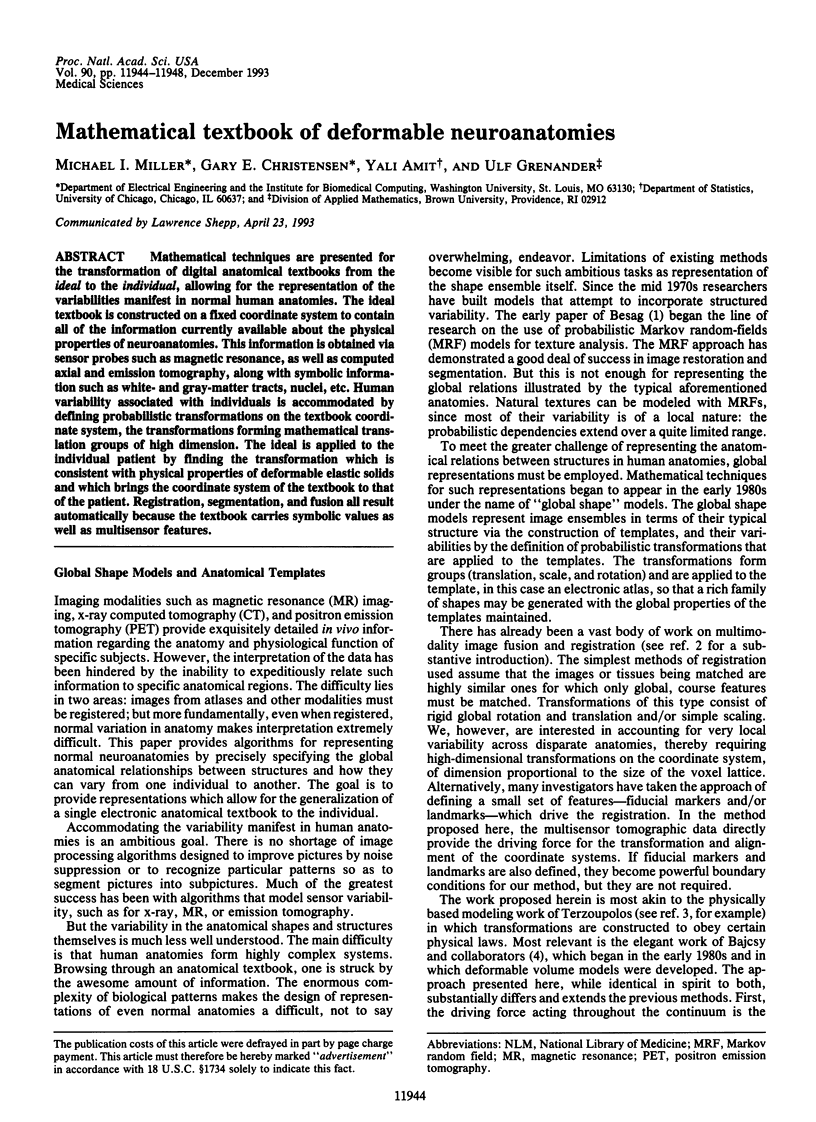
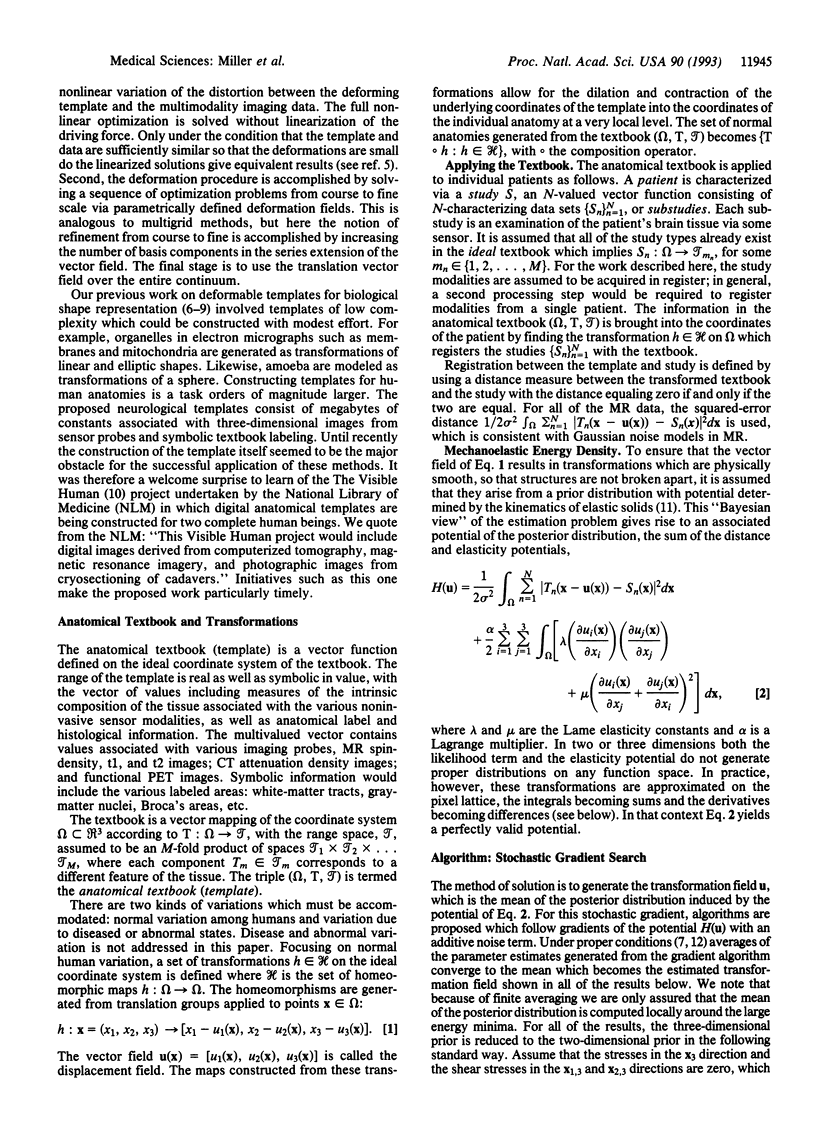
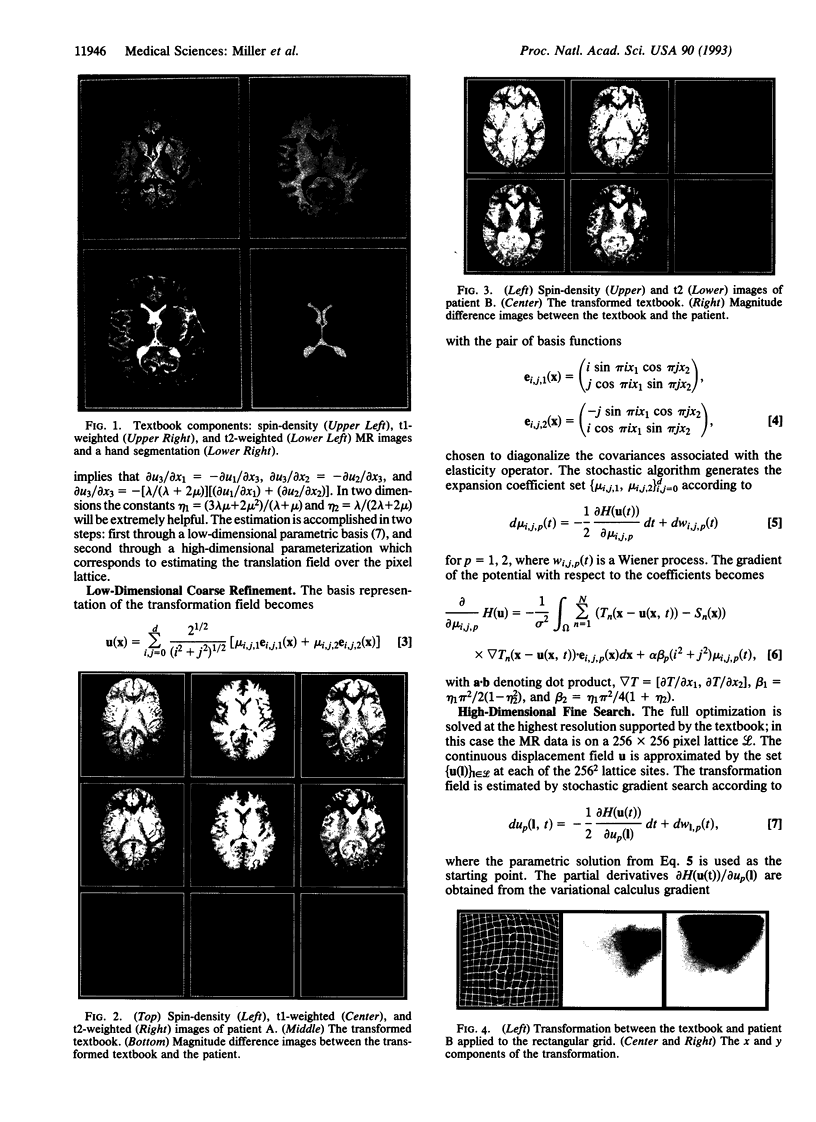
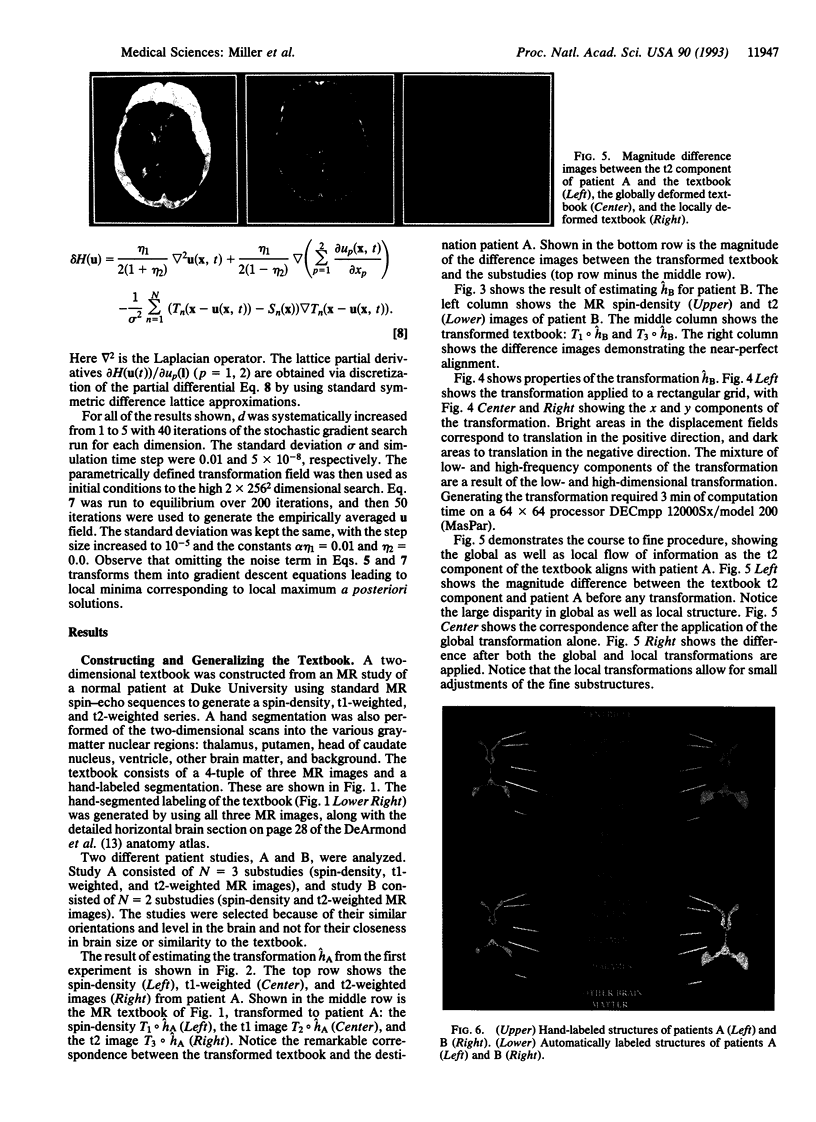
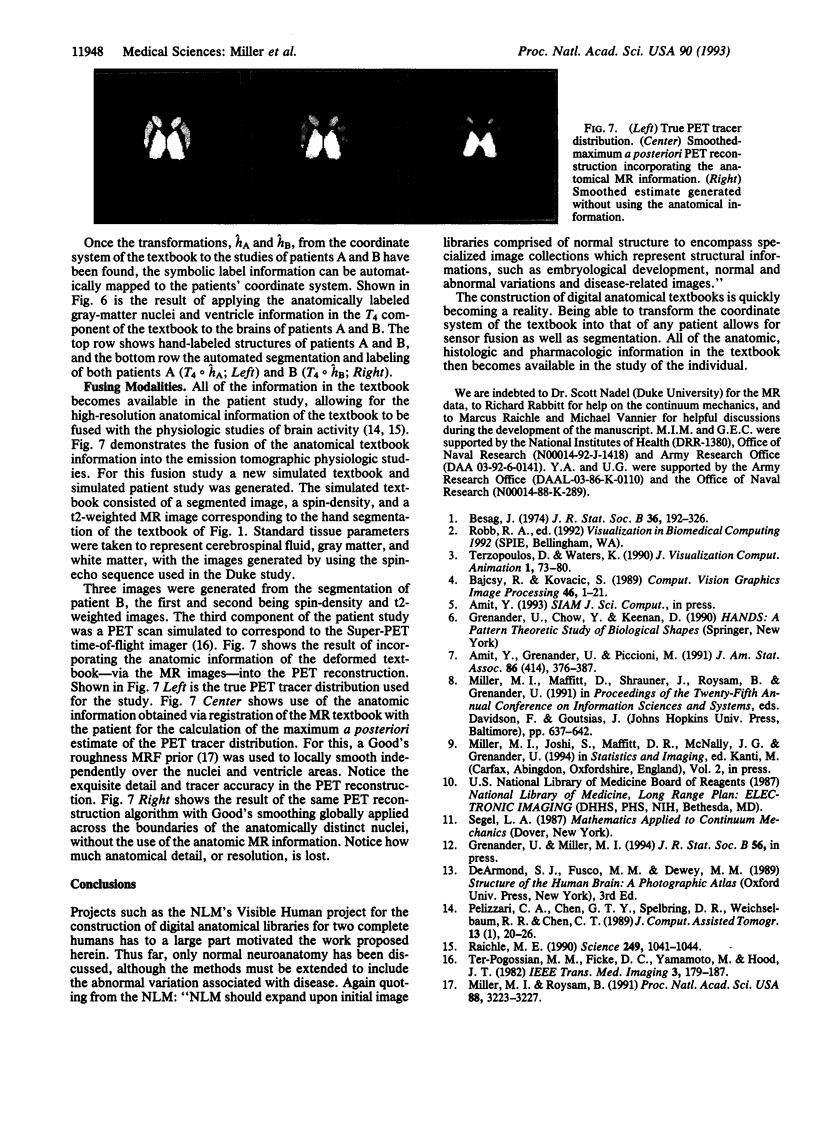
Images in this article
Selected References
These references are in PubMed. This may not be the complete list of references from this article.
- Miller M. I., Roysam B. Bayesian image reconstruction for emission tomography incorporating Good's roughness prior on massively parallel processors. Proc Natl Acad Sci U S A. 1991 Apr 15;88(8):3223–3227. doi: 10.1073/pnas.88.8.3223. [DOI] [PMC free article] [PubMed] [Google Scholar]
- Pelizzari C. A., Chen G. T., Spelbring D. R., Weichselbaum R. R., Chen C. T. Accurate three-dimensional registration of CT, PET, and/or MR images of the brain. J Comput Assist Tomogr. 1989 Jan-Feb;13(1):20–26. doi: 10.1097/00004728-198901000-00004. [DOI] [PubMed] [Google Scholar]
- Petersen S. E., Fox P. T., Snyder A. Z., Raichle M. E. Activation of extrastriate and frontal cortical areas by visual words and word-like stimuli. Science. 1990 Aug 31;249(4972):1041–1044. doi: 10.1126/science.2396097. [DOI] [PubMed] [Google Scholar]



